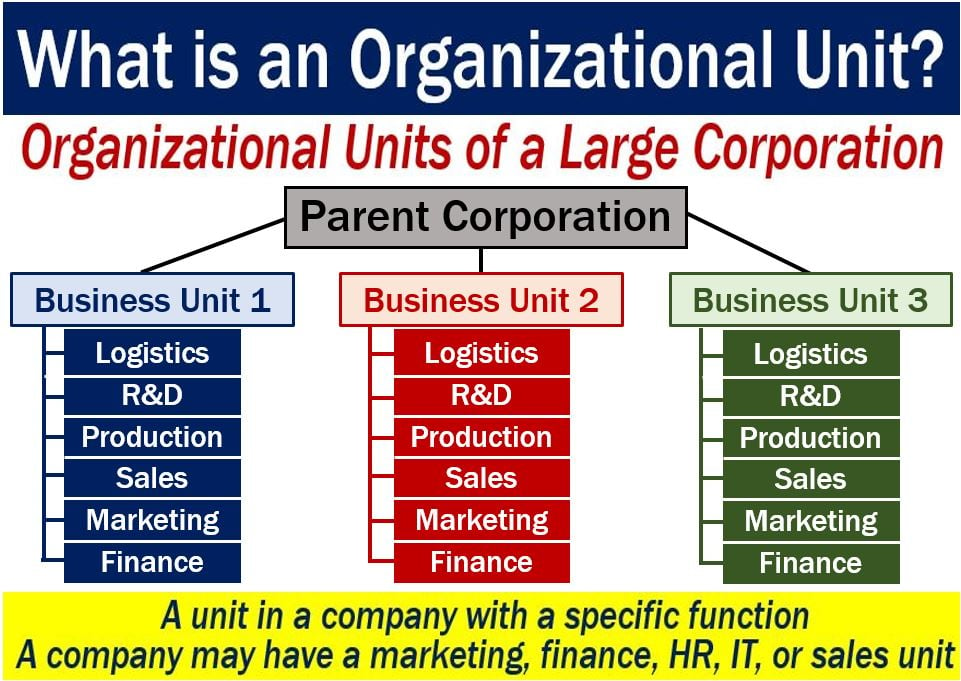An Organizational Unit in business is one of several organizational groups that accomplish a specific function. In other words, it is one of many vital business functions in an organization. An organizational unit, in computing, is a subdivision within an archive directory. In that archive directory, we can place users, computers, groups, and other organizational units.
The first half of this article explains the meaning of the term in a business environment. The second half explains its meaning in computing.
Organizational unit – in business
In business, an organizational unit or OU is one of several functions within a company. In a dynamic business landscape, organizational units serve not just as subdivisions, but as agile components that can adapt and reorganize in response to strategic shifts.
Businesses create organizational units to boost efficiency. Efficiency is all about getting as much as you can out of the available resources.
The structural design of organizational units allows for specialized operational focus, enhancing a company’s ability to respond to industry changes and market demands efficiently.
Organizational units are the result of the division of labor. The division creates different units for IT, accounting, sales, marketing, HR, finance, etc. IT stands for Information Technology while HR stands for Human Resources.
How people divide up the different tasks within a corporation varies. For example, some companies create organizational units according to groups, while others focus on project teams or functions.
Departments, companies, teams, and enterprises could be units. Companies create each organizational unit based on a definition of the features and attributes of that unit.

Additionally, for every unique value of the characteristics, there may be several units.
For example, let’s suppose a company has several design departments. The company may have a Design Department, under which there is a Product Layout Department, Product Design Department, etc.
Organizational unit – in computing
In computing, an organizational unit provides us with a way of classifying objects within directories. It is also a way of classifying names in a digital certificate hierarchy.
We often use organizational units to differentiate between objects with the same name. For example, Paul Smith in OU ‘customer service’ versus John Smith in ‘marketing.’
We may also have OUs to parcel out authority to create and manage objects.
In the majority of systems, each organizational unit appears within an organizational certificate or top-level organization grouping.
In many systems, in fact, there might be one OU inside another OU. We call them the child OU and parent OU respectively.
